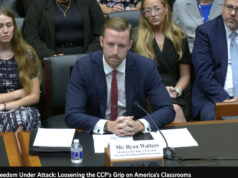President Donald J. Trump was sworn into office Jan. 20, and what a whirlwind his first two-plus weeks have been.
Trump, in a fit of executive orders, has seemingly forgotten he is the head of only one of the three total branches of government. Executive orders have been issued on the Affordable Care Act (Obamacare), on the restriction of immigrants from certain countries, on border security (“building the wall”) and on reducing regulations. Throw in a plethora of presidential memoranda and a couple of proclamations, and you have what one outlet has described as “the most prolific use of executive action” at the start of any presidential term in recent history. We haven’t even discussed his cabinet and Supreme Court nominees.
In addition, it does not appear the flood of orders is going to abate anytime in the near future. If previous executive orders are any indication of what future ones will look like, the feeling of chaos and instability that has permeated the first two weeks of the Trump presidency will not go away anytime soon.
Take Trump’s executive order banning travel to the U.S. from seven specific countries, for example. Even Trump’s supporters have criticized the manner in which this order was implemented. Relatedly, the POTUS’s executive order on the ACA is so vague that it will be hard to tell if the appropriate agencies and personnel are actually complying.
Partisan hypocrisy highlighted
More important than resultant chaos and instability, however, is that Trump is taking full grasp of President Barack Obama’s “pen and phone” in his attempt to mold public policy. This approach is highlighting the partisan hypocrisy of both parties: Liberals, who cheered Obama for overcoming an uncooperative Congress via executive orders, now gasp as Trump follows the example; and conservatives, who blasted Obama for pursuing an “imperial presidency,” now express support for Trump’s use of executive power. The ordeal proves once again that neither side is actually concerned about the wielding of vast powers by one official, but rather they just want that one official to be in their particular party.
Two directions
Trump’s insistence on the use of executive orders could take national politics in one of two directions. First, it could lead to a further sidelining of Congressional authority while increasing public expectations of executives to “take action” to solve problems. Indeed, one of Trump’s consistent promises during the 2016 presidential campaign was that he would “get things done.” So far, he’s shown he isn’t planning on waiting for Congress. The troubling aspect of this is that it undermines the separation of powers built into our system of government.
The Framers of our Constitution were concerned about the concentration of powers within the executive branch. They knew that the executive power was the power to act directly on the people — to make the laws become reality through enforcement (and today, through a great amount of discretion on how to implement those laws). Yet, the tendency over the last century has consistently been to consolidate more and more authority and power toward the executive branch. At some point, it won’t be beyond reason to ask, “What do we need Congress for?”
However, it might just take a different track. It might be that the people begin to reconsider this massive concentration of power in the executive branch. Perhaps they will decide that “getting things done” isn’t the highest priority in politics. Perhaps people will reaffirm that how things are done is just as important as what is done. Perhaps the people will pressure Congress to reassert its powers within our republican system. It could be that both liberals and conservatives realize that relying on executive powers solely to achieve public policy benefits only whoever occupies the office over the long term. Perhaps both will come to the conclusion that restraining executive power is in both their interests — and the interests of the American people and our system of government.
Controversial pursuits increase alienation
Should this second course be the one we travel down, another positive outcome might be more hesitancy by government officials to pursue controversial policy goals when their majorities are relatively slim and when election results reveal an America still significantly divided on major issues.
At the very point the nation needs an agenda that can bring people, and elected officials, together, Trump’s administration seems committed to pursuing the most controversial of his campaign pledges. This approach, while satisfying supporters, only further alienates those who did not support him — including those who might have been willing to support the new president on less divisive issues.
By pressing on the more controversial issues initially, President Trump has pretty much burned up any good will those opposing him would have been willing to give on issues of common interest. And it ensures the opposition party will pursue the same course of action when they again reach majority status.
‘Erosion’ expected to continue
Trump’s two weeks of chaotic action do not bode well for American political life. Congress, which has been, whether by choice or by default, continuously diminished in its role as a primary counter-balance to presidential power, appears either unwilling or unable to reassert itself early in this administration. To what extent the courts will check presidential power remains to be seen (although the recent ruling by Judge Donnelly on the president’s immigration order gives one some hope).
Furthermore, the president’s actions have only served to heighten fears of many in the country that his agenda is one of direct hostility toward them. This approach continues to undermine the ability of individuals to find areas of agreement and compromise.
I fear, of the two options presented, Trump’s presidency will take the former route and continue to erode the institutions, processes and political environment of the nation.






















